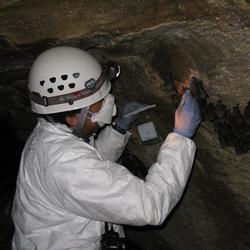Adrianne Brand
Adrianne Brand is a wildlife biologist with the Northeast Amphibian Research and Monitoring Initiative (NEARMI).
With a focus on threats and declines in amphibians populations, NEARMI seeks to better understand the factors contributing to changes in amphibian populations and provide information to resource managers on the status of amphibians on DOI lands in the region. The scope of work includes conducting annual monitoring surveys, carrying out research projects, and working with land managers to better inform natural resource decision making for both rare and common species.
Professional Experience
05/2009 – present Wildlife Biologist, USGS Patuxent Wildlife Research Center, Turners Falls, MA
08/2006 - 12/2008 Graduate Research/Teaching Assistant, Towson University, Towson, MD
05/2005 – 08/2006 Field/Research Technician – West Virginia University, Morgantown, WV
05/2004 – 08/2004 Biology Intern, USDA Natural Resources Conservation Service, Lewisburg, WV
Education and Certifications
2008 M.S. – Biology, Towson University, Towson, MD 21252.
2006 B.S. - Wildlife and Fisheries Resources & B.S. - Environmental Protection, West Virginia University, Morgantown, WV








